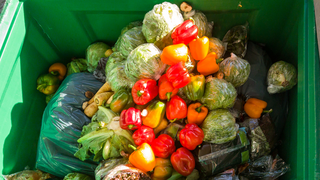
Israel's food loss report published on Monday revealed worrying figures about product waste in the country. In 2023, approximately 2.6 million metric tons (2.
87 million U.S. tons) of food were lost, amounting to a total value of NIS 24.

3 billion ($6.6 billion). This marks an effective increase of 3% year-on-year, with food loss now accounting for 1.
3% of the national GDP and 38% of all food produced. The report, conducted by BDO in collaboration with the Environmental Protection and Health ministries, is based on data from Israel’s Central Bureau of Statistics (CBS) and provides a comprehensive analysis of the war’s impact on food loss and food security in Israel. 2 View gallery ( Photo: Shutterstock ) The authors of the report wrote that the war has added an economic toll of 1.
6 billion shekels ($437 million) in the first nine months of fighting (through June 2024), including approximately 1 billion shekels ($273 million) in direct food loss, 200 million shekels ($55 million) in environmental damage and 370 million shekels ($101 million) in health costs due to increased food insecurity. Israel’s agricultural sector has been particularly hard hit, with 32% of farmland located in combat zones in the south and north. According to the report, a sharp drop in foreign workers — up to 59% in the war’s early months — led to the loss of 228,000 metric tons (251,000 U.
S. tons) of agricultural produce, enough food to feed hundreds of thousands of families during this critical period. The report further noted that behind the raw numbers lies a harsh reality: 1.
5 million Israelis are currently experiencing food insecurity, up from 1.4 million in 2022 . This number is expected to rise sharply due to the ongoing security and economic situation.
Get the Ynetnews app on your smartphone: Google Play : https://bit.ly/4eJ37pE | Apple App Store : https://bit.ly/3ZL7iNv The economic impact is also evident, with the economy incurring 5.
5 billion shekels ($1.5 billion) annually in additional health care costs related to poor nutrition, up from 5.2 billion shekels ($1.
4 billion) the previous year. 2 View gallery ( Photo: Shutterstock ) The report also revealed that nearly half of all lost food — 1.2 million metric tons (1.
32 million U.S. tons) worth 8.
6 billion shekels ($2.35 billion) — is still edible and salvageable. The main salvage potential lies in the retail and distribution stage (4.
5 billion shekels or $1.23 billion) and the agricultural stage (2.1 billion shekels or $574 million).
Saving this food could fully address food security needs for all citizens, especially vulnerable populations, while also reducing the widening social gaps. “The war has exposed the fragility of Israel’s food system,” said food rescue NGO Leket Israel CEO Gidi Kroch. “During the months of fighting, 228,000 metric tons (251,000 U.
S. tons) of agricultural produce were lost, while many families fell into poverty. The current crisis clearly highlights the need for systemic change — we can’t continue relying on external factors like imports to mitigate the worsening hunger crisis in Israel.
The Gaza War presents a clear opportunity for a conceptual shift — incorporating food rescue as an integral part of national resilience," he added. BDO chief economist and report editor Chen Herzog added that: “Food loss of 24.3 billion shekels ($6.
6 billion) is equivalent to about one-fifth of Israel’s expanded defense budget. The cost of food loss ultimately falls on the public and increases the financial burden already worsened by the war. The report highlights the importance of food security both in routine times and during emergencies.
” >.















